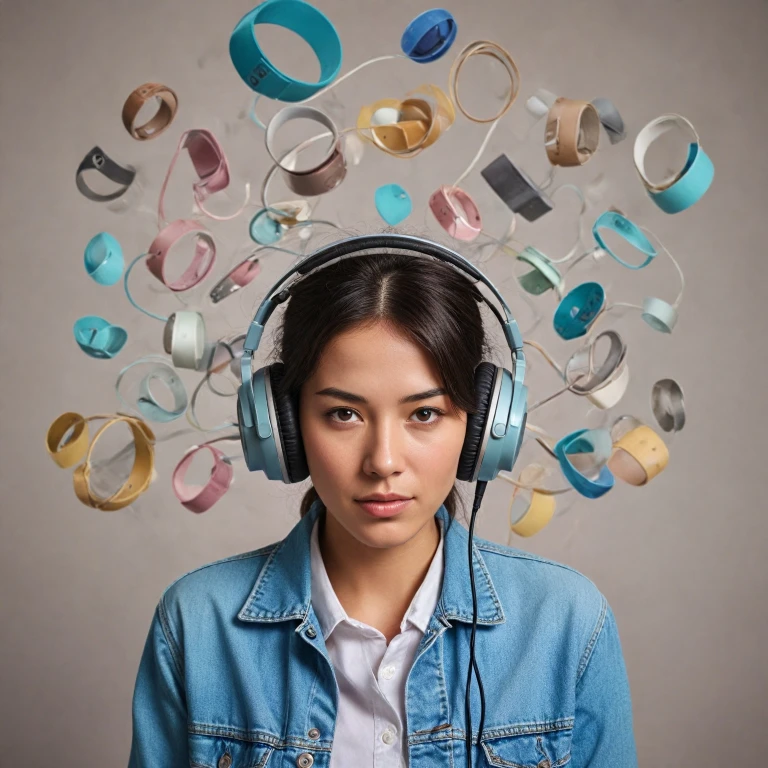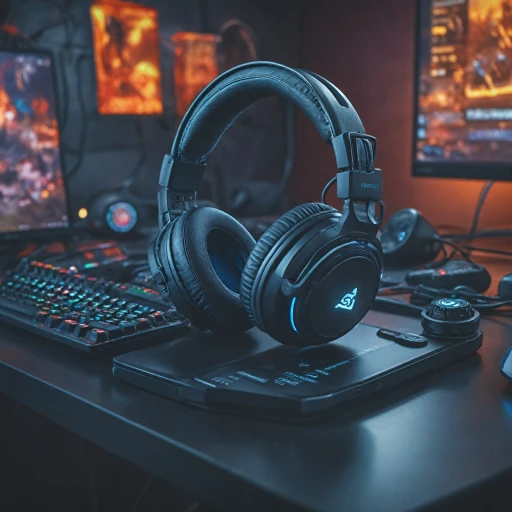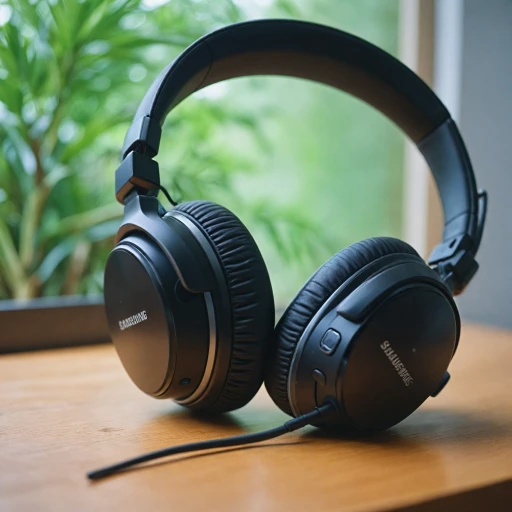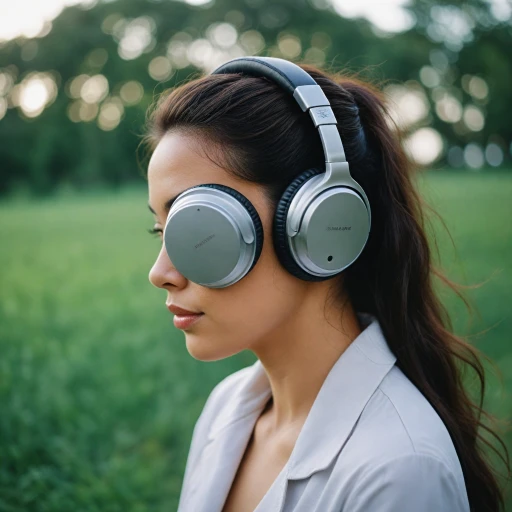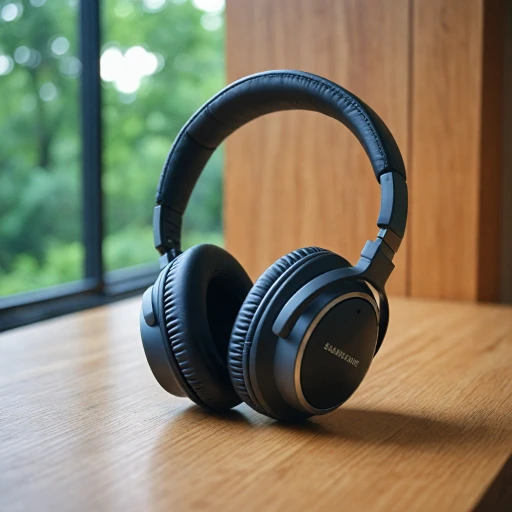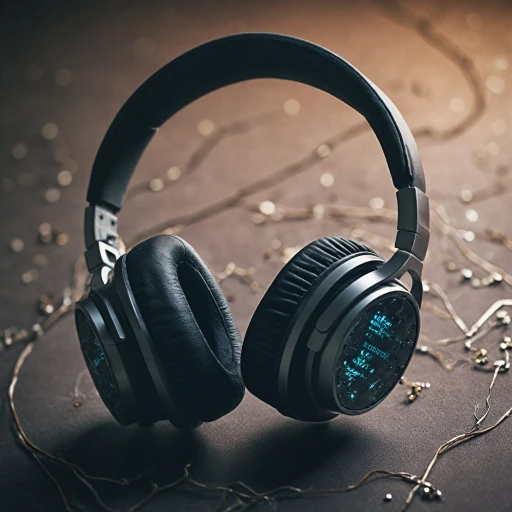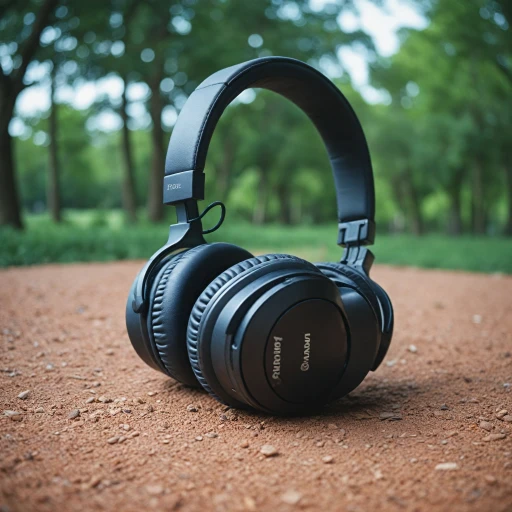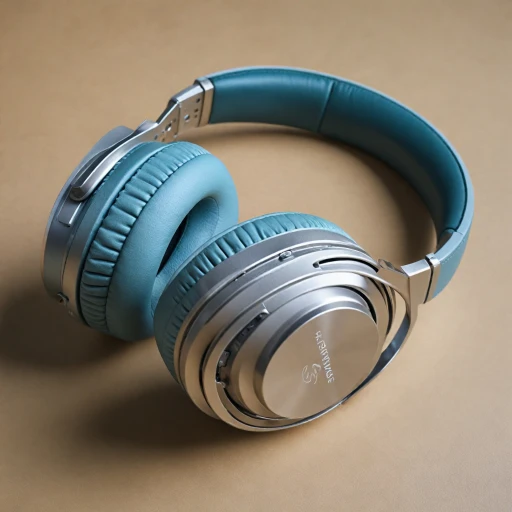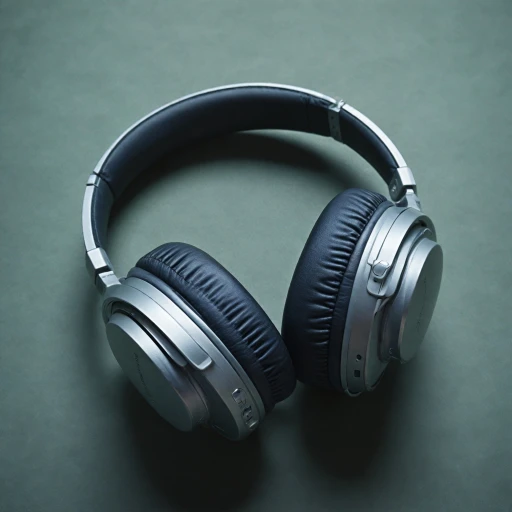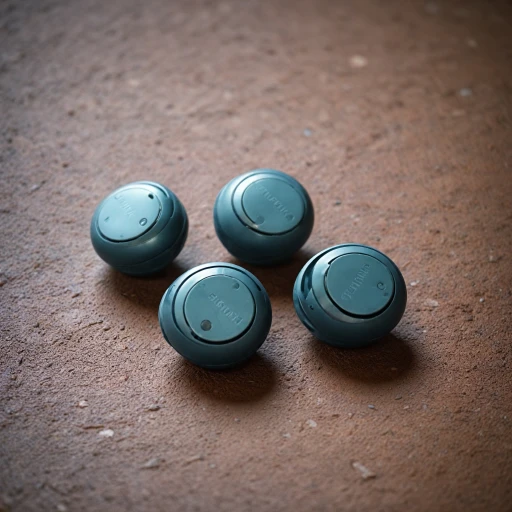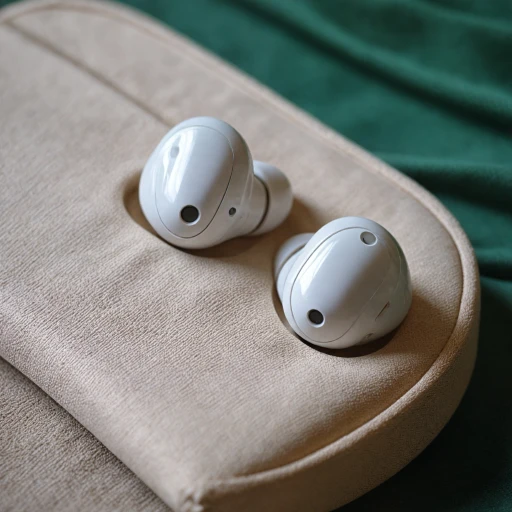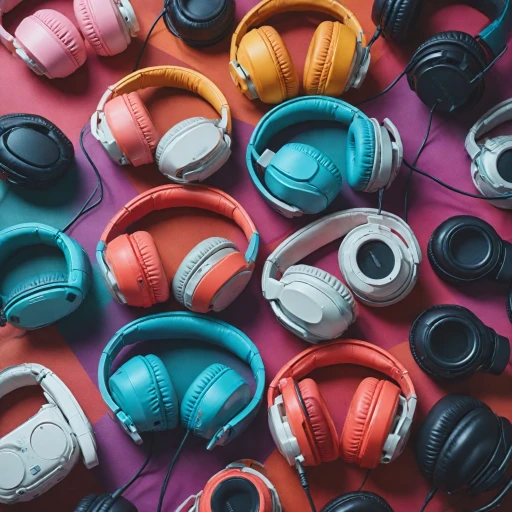
The Basics of Noise Cancelling Technology
Unveiling the Core of Sound Cancellation
Noise canceling headphones have quietly revolutionized the way we experience audio by minimizing unwanted background noise. At its heart, noise cancellation technology—often abbreviated to ANC—operates on the principle of neutralizing ambient sound. Fundamentally, this involves two main strategies: active and passive noise cancellation.
Active noise cancellation, the science behind this technology, leverages sophisticated circuitry and miniature microphones. These components capture external noises and produce sound waves that are precisely the inverse, effectively canceling unwanted sounds through destructive interference. This mechanism works wonders in reducing persistent, low-frequency sounds, such as the hum of an airplane engine.
On the flip side, passive noise cancellation relies on the design of the earphones or headphones to block external sound. These headphones usually encompass over-ear or in-ear designs that physically obstruct sounds from reaching your ears. While less technologically complex than active canceling, the physical barriers are quite effective against higher frequency sounds.
Both forms of noise cancellation have seen significant advancements, giving us products like the AirPods Pro and Bose QuietComfort series. However, it's crucial to balance expectations when considering the best ANC headphones for your needs. The effectiveness varies depending on the model and environment in which they are used, highlighting the importance of informed decision-making when selecting your ideal pair.
For those keen on diving deeper into understanding the intricacies of earc technology in noise-canceling headphones, you might find it valuable to explore more on this here.
Active Noise Cancelling: The Science Behind the Silence
Unraveling the Science of Sound Blockage
Active noise canceling (ANC) technology truly distinguishes itself through its scientific approach to reducing unwanted ambient sounds. While the outer design of headphones plays a role in passive noise reduction, the core of ANC lies in its ability to actively manipulate sound waves to create a quieter listening environment.
How Do Active Noise Cancelling Headphones Function?
The primary mechanism involved in ANC headphones is the use of microphones placed strategically on the ear cups. These microphones pick up the background noise that surrounds the listener. Upon detecting these external sounds, the headphones work by generating a sound wave that is the exact opposite—known as an anti-phase sound wave—of the incoming noise. This process, called destructive interference, effectively cancels out the unwanted sounds before they reach the ears.
For instance, low-frequency background sounds like the hum of a plane or traffic noise are significantly reduced, providing a serene audio experience. However, it's important to note that while ANC is excellent at handling consistent low-frequency noises, it may struggle with sudden or high-frequency sounds.
The Technical Marvel Behind ANC
The success of ANC headphones hinges on their ability to continuously analyze and respond to external sounds in real-time. The essential components in this technology include signal processors and adaptive algorithms that work harmoniously to ensure efficient noise cancelation. Companies like Bose, with their QuietComfort range, have perfected this technology, making them leaders in delivering the best noise reduction systems available.
To delve deeper into how the design of closed-back headphones further enhances noise cancellation, integrating this knowledge can be highly beneficial for those seeking the best audio experience.
Passive Noise Cancelling: The Power of Design
Harnessing the Power of Design for Noise Blocking
When considering noise cancelling headphones, it's crucial to understand that passive noise cancelling plays a significant role in how these devices work. While active noise cancellation relies heavily on technology, passive noise cancelling hinges on the physical design and materials used in the headphones. This approach involves the strategic design of ear cups and ear pads that fit snuggly over or inside the ear, effectively blocking ambient noise by creating a seal that reduces the intrusion of background noise.
Unlike active counterparts where sophisticated electronics are used, passive noise cancelling is about simplicity and precision in design. By using thick, high-density materials like foam or specialized plastics, sounds are absorbed and reflected away, ensuring your music or audio experience remains uninterrupted by outside noise. This is why models like the Bose QuietComfort and QuietComfort Ultra excel in passive noise reduction, making them some of the best noise cancelling headphones on the market.
It's interesting to note that passive noise cancelling will often form the foundational layer upon which active noise cancelling is built. The efficiency of passive techniques is typically evident in over-ear models and specialized earbuds like the AirPods Pro, which utilize snug fittings to block out environmental sounds. For those seeking optimal quiet, combining both active and passive elements in headphones work tirelessly to reduce unwanted frequency sounds, allowing users to enjoy their listening experience.
Benefits and Limitations of Noise Cancelling Headphones
Advantages and Drawbacks for Consumers
Noise canceling headphones have rapidly become an essential tool for anyone looking to immerse themselves in their music or simply find a moment of peace amidst chaos. The benefits are plenty, but it's important to consider both sides of the coin.
Advantages:
- Enhanced audio experience: By eliminating unwanted ambient noise, noise canceling technology allows users to enjoy sound clarity and detail. Whether you're listening to your favorite tunes on a pair of Bose QuietComfort headphones or experiencing the crisp audio of Apple AirPods Pro, noise cancellation optimizes your experience.
- Hearing protection: Continuous exposure to loud environments can harm your hearing. Active Noise Canceling (ANC) headphones help reduce the need to crank up the volume, thus protecting your ears from potential damage.
- Reduced background noise: ANC headphones can substantially decrease the level of external sound, making them a preferred choice for frequent flyers or daily commuters battling the din of public transport.
Drawbacks:
- Battery life: The technology powering active noise cancellation demands energy, resulting in shorter battery life for ANC headphones compared to traditional counterparts.
- Sound quality: While some audiophiles argue that ANC can alter audio playback, it varies widely among models. It's crucial to test how different headphones work with your preferred music genres.
- Price point: Top-tier noise canceling headphones, such as anc headphones or the Bose QuietComfort series, can be costly. However, their performance and convenience often justify this investment.
- Pressure and discomfort: Some users may experience a feeling of pressure on their ears when using ANC headphones, sometimes leading to discomfort over extended periods.
- Not a complete noise blocker: While they are effective at reducing certain frequency sounds, they might not cancel out all sorts of noise, especially sudden loud sounds.
Understanding these pros and cons will guide you in making an informed choice that fits your specific needs and lifestyle. Keep in mind that the best noise cancelling headphones for you may not be the same as for another person. Consider your primary usage scenarios, and try out different models to see which works best for your hearing and sound preferences.
Choosing the Right Noise Cancelling Headphones for You
Finding Your Ideal Noise Cancelling Headphones
When it comes to choosing the right noise canceling headphones, there's a multitude of factors to consider ensuring you find the best fit for your auditory needs. With the advancing noise cancellation technology, from active noise cancelling (ANC) to effective passive noise reduction, selecting the perfect pair requires an understanding of your priorities.Consider Your Environment
The environment in which you plan to use your headphones plays a significant role in your selection process:- Active vs Passive Noise Cancelling: In highly noisy environments such as airplanes or crowded city streets, headphones with robust ANC like Bose QuietComfort or AirPods Pro are advantageous. For quieter settings, passive noise cancellation, achieved through design aspects such as snug ear cups or earbuds, may suffice.
Audio Quality Matters
While blocking out unwanted noise is essential, the core function of headphones is play audio. To ensure a superior auditory experience:- Sound Quality: Look for headphones that maintain crystal clear audio even with noise cancellation activated. Brands like Bose and others are known for balancing noise reduction with top-quality sound.
- Frequency Range: Choose headphones that effectively cancel low-frequency sounds, such as rumbling engines, without sacrificing the nuances of your music or other audio.
Comfort and Fit
Wearing comfort can make or break your listening experience:- Over-Ear vs In-Ear: Over-ear headphones tend to offer better passive noise isolation, whereas in-ear options like earbuds can be more portable and convenient.
- Earpads and Materials: Look for materials that are gentle on the skin and well-engineered ear ergonomics for long-term comfort.
Battery Life and Ease of Use
For those who prefer active noise canceling models, battery life is a crucial consideration:- Battery Longevity: Ensure the headphones provide at least 20 hours of noise cancellation per charge for prolonged use.
- User-Friendly Controls: Features such as touch controls or voice assistance can enhance the experience, allowing seamless adjustments on the go.
Assess Brand and Model Options
Research and user reviews can significantly influence your decision-making:- Reputable Brands: Stick to brands known for their excellence in noise cancelling technology. Models like the Bose QuietComfort Ultra tend to receive high praise for their sound blocking capabilities.
- Model Specifics: Reading detailed reviews comparing ANC headphones can aid you in understanding how different models work concerning noise reduction efficiency.
Future Trends in Noise Cancelling Technology
Looking Ahead: Innovations Shaping Noise Cancelling Technology
The realm of noise cancelling technology is continually evolving, focusing on maximizing the listening experience while accommodating various environments and user needs. Here are some key trends and advancements to keep an eye on:- Improved Sound Quality and Audio Processing: Modern noise cancelling headphones strive to enhance sound quality by integrating advanced audio processing features. This focus ensures crisp sound reproduction, whether you’re indulging in music or making calls amidst background noise.
- Adaptive Noise Cancelling: A step beyond traditional active noise cancelling, adaptive noise cancellation adjusts to your surroundings. Sensors detect ambient noise levels, allowing the headphones to optimize noise reduction in real-time, providing a seamless auditory experience.
- Inclusion of AI and Machine Learning: By utilizing AI, manufacturers are developing headphones that learn your preferences over time. This technology anticipates the best sound settings and noise reduction levels for different scenarios, enhancing audio personalization.
- Ergonomic Design Enhancements: As explored previously, passive noise cancelling is heavily reliant on design. Advances in materials and ergonomic sculpting have made headphones lighter, more comfortable for longer wear, and more effective at naturally blocking ambient noise.
- Cross-Device Compatibility and Interface: Future noise cancelling headphones aim for broader device compatibility and seamless user interfaces, reflecting changes discussed in the sector's shifts, such as usb-c transitions.
- Battery Life and Sustainability: Consumers can expect longer battery lives with faster charging capabilities. Sustainability concerns are also driving brands to explore eco-friendly materials and energy-efficient technologies in headphone manufacturing.
